While each type of organism is adapted to a specific habitat, notevery creature can bear even mild fluctuations in their external environment.The terrestrial animals are more prone to the effects of environmental hazards. And there are organisms that find it difficult to survive through the cycle of seasons. The only viable option for them is to move to some other habitat, such as going for hibernation.
As humans,our body has built-in cooling and warming mechanisms to counter the effects of temperature fluctuations in the surroundings. The same is the case with goats, cows, buffaloes, horses, and donkeys. But can the snakes and frogs do the same? No. Unfortunately, they cannot control their body temperature and tend to become sluggish in cold weather.
Animals are divided into two groups based on their ability to cope with temperature fluctuations in the environment. Organisms which can regulate the temperature of their body and keep it constant despite the changing temperature of the surroundings are known as warm blooded animals. On the other hand, animals which lack this ability are known as cold blooded organisms.
The latter are also termed as poikilotherms animals while the former are known as homotherms. Examples of homotherms are mammals, such as human beings, primates and whales. Whereas, the list of cold blooded creatures includes reptiles – such as alligators, crocodiles, turtles, lizards and snakes – as well as amphibians – including frogs, salamanders and toads.
The following discussion contains more information about these two types of organisms.
Body Temperature
The major difference between warm blooded and cold blooded animals is that the former maintain a constant body temperature while the temperature of the latter varies according to the surroundings. It is important for warm blooded animals to keep their body temperature constant so that various chemical reactions taking place internally can proceed properly. A number of enzymes used in these reactions are sensitive to temperature and, therefore, require a constant body temperature. On the other hand, different chemical processes taking place in the body of cold blooded animals can proceed despite temperature variations.
Temperature Control Mechanisms
Warm blooded animals exhibit natural control mechanisms to keep their body temperature constant. However, cold blooded animals lack these mechanisms and, therefore, their temperature changes according to the temperature of their environment.
The natural temperature control mechanisms used by various warm blooded animals are listed below.
Sweating
Mammals are a type of warm blooded animals which produce sweat in order to keep their body cool in warm environments. As the sweat evaporates from the surface of the body, a cooling effect is produced.
Presence of Hair or Fur
Many warm blooded organisms possess hair or thick fur on the surface of their body. It helps them stay warm in cold environments. Air trapped between the hair or fur acts as an insulator which prevents body heat from escaping.
Shivering
The act of shivering produces heat which helps in maintaining a constant body temperature in cold surroundings. Shivering consists of muscle movements which lead to the generation of heat in the body.
Migration
Certain warm blooded creatures, such as birds, migrate to warmer environments when the weather turns chilly. This is also a natural way of preventing changes in the body temperature. On the other hand, migrating to cooler regions helps in surviving during hot surrounding temperatures. Certain organisms instinctively move towards shade or other cooler regions in order to beat the heat.
None of the above mentioned temperature control mechanisms are exhibited by any cold blooded animal.
Nutritional Requirements
Warm blooded animals generate heat during chilly temperatures by turning body fat into energy. The chemical reaction which breaks down fat results in the production of heat. Therefore, the nutritional requirements of warm blooded animals are greater as compared to cold blooded creatures. They not only need to eat more but also feed more. This helps in storing enough fat in the body which can be used whenever required.
Level of Activity
Another important difference between warm blooded and cold blood animals is their level of activity during different types of weather. Warm blooded animals remain active whether the surroundings are hot or cold. On the other hand, cold blooded organisms exhibit a lower level of activity in cold temperatures. This is because their muscle activity depends on certain chemical reactions which are faster in warm surroundings as compared to chilly ones. Therefore, cold blooded animals become sluggish when the weather turns cold.
Habitat Range
Since warm blooded animals can naturally regulate their body temperature, they can survive in different types of environments regardless of the surrounding temperature. Therefore, they have a wider habitat range as compared to cold blooded animals. The latter fail to survive in chilly environments. On the other hand, warm blooded organisms are found in all types of environments, including the extremely chilly arctic region.
Vulnerability to Parasites
Warm blooded animals offer a favorable temperature for the growth of various types of microorganisms. This difference between warm blooded and cold blooded animals is actually a disadvantage for the former. Warm blooded animals, such as mammals, offer a warm and constant temperature to bacteria, viruses and fungi to flourish. This leads to various types of diseases. On the other hand, animals which are cold blooded evade these infections through a constantly changing body temperature which impedes the growth of parasitic microorganisms.
The features discussed above differentiate warm blooded animals from cold blooded organisms. Both groups of animals exhibit their own mechanisms for survival.
Do you find this article interesting and informative? If yes, how much? Also, give your precious suggestions to improve it further.
Latest Mammals
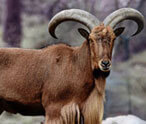
Types Of Goats
Goat is a mammal that belongs... read more
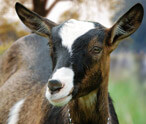
Goat Facts
A domesticated form the wild goat of...read more
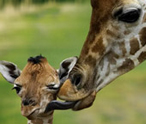
Giraffes Facts
Giraffes are creatures with extremely...read more
Latest Birds
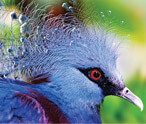
Victoria Crowned Pigeon
With its name...read more
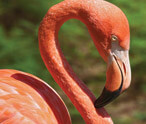
Information About Flamingos
Flamingos are...read more
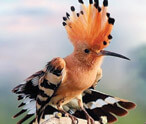
Hoopoe Bird
Famous for its distinctive crown of...read more
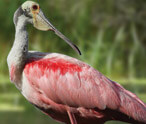
Roseate Spoonbill
The beautiful Roseate Spoonbill...read more





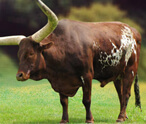

















Largest Birds of Prey in the World by Size and Weight
Also called raptors, the birds...
List of Birds That Fly in V Formation
Did you ever feast your eyes on the amazing phenomenon...
Birds of Prey List
A bird of prey is also known as a raptor or a hunter. It belongs to the group of...
Millipedes Vs Centipedes
Centipedes and millipedes are both arthropods from the group...
Difference Between Warm Blooded and Cold Blooded Animals
Every living organism...
Top 10 Extremely Dangerous Insects
The insects have been grouped in class 'insecta' of...
Sheep Vs Goat
The goat and the sheep are related to each other through the same family. They...
Animals with Blue-colored Blood
Humans and other vertebrates have red-colored blood running...
Birds, Mammals And Reptiles
Before coming to the question of common ancestry of birds...